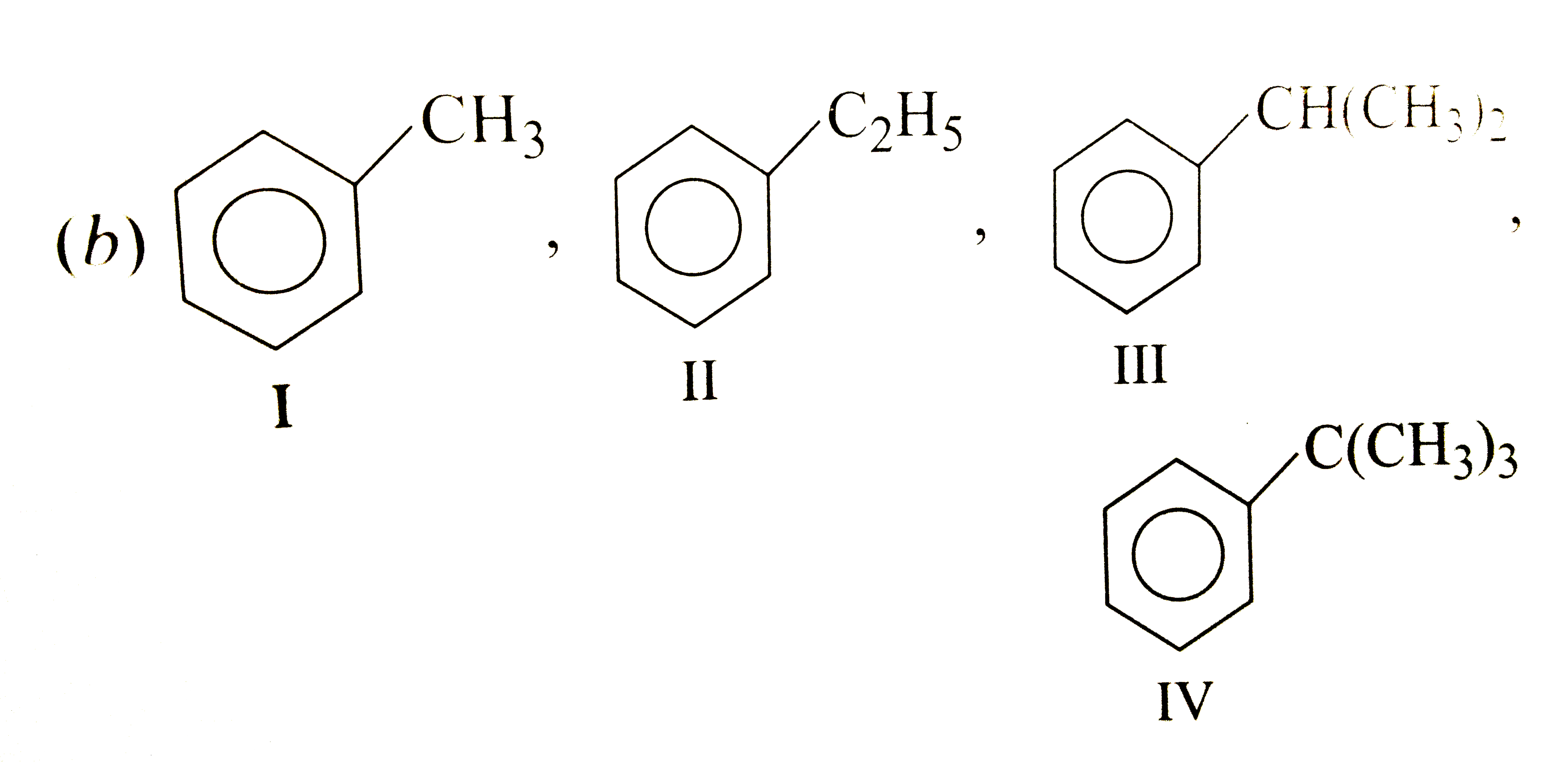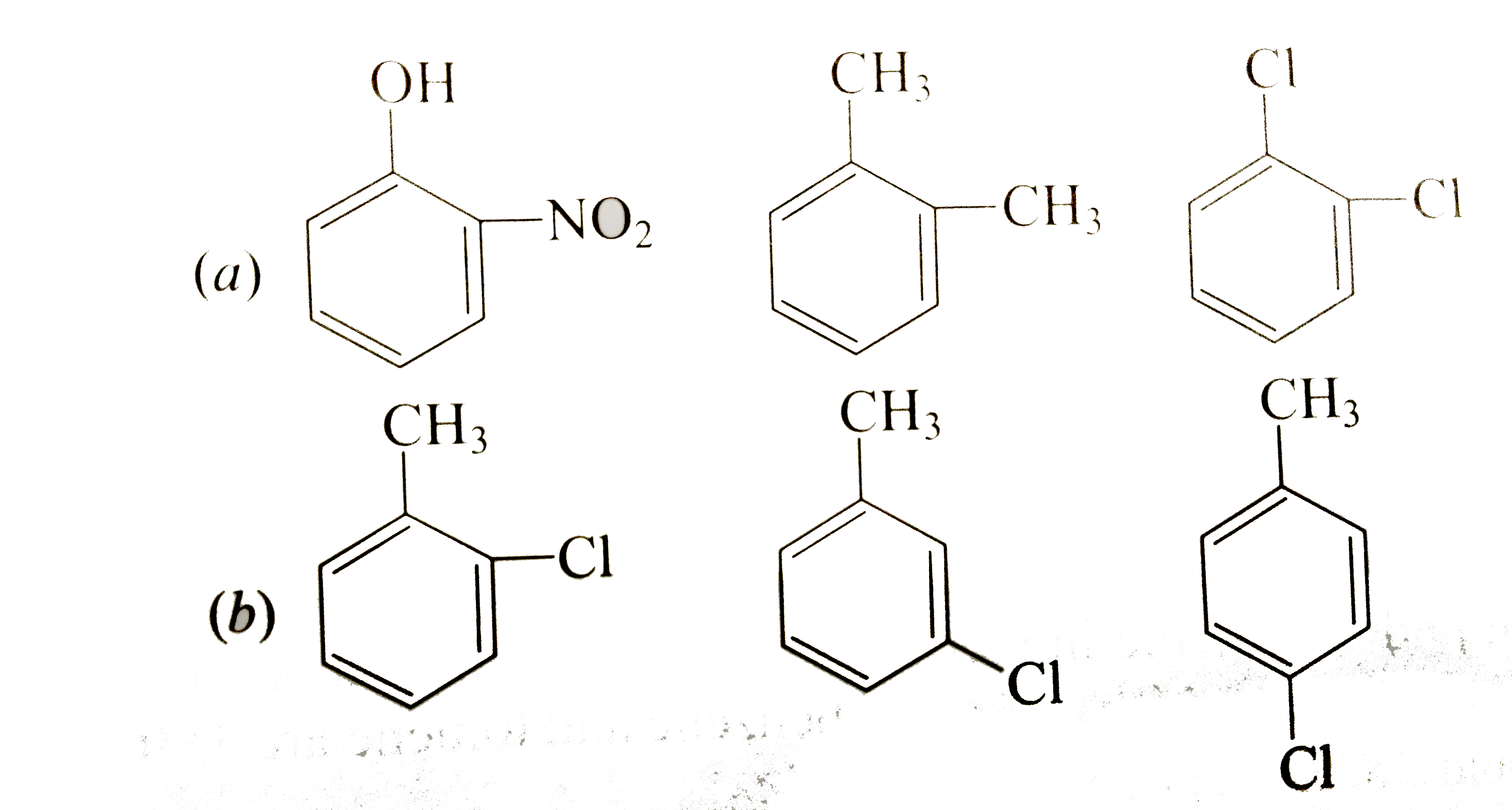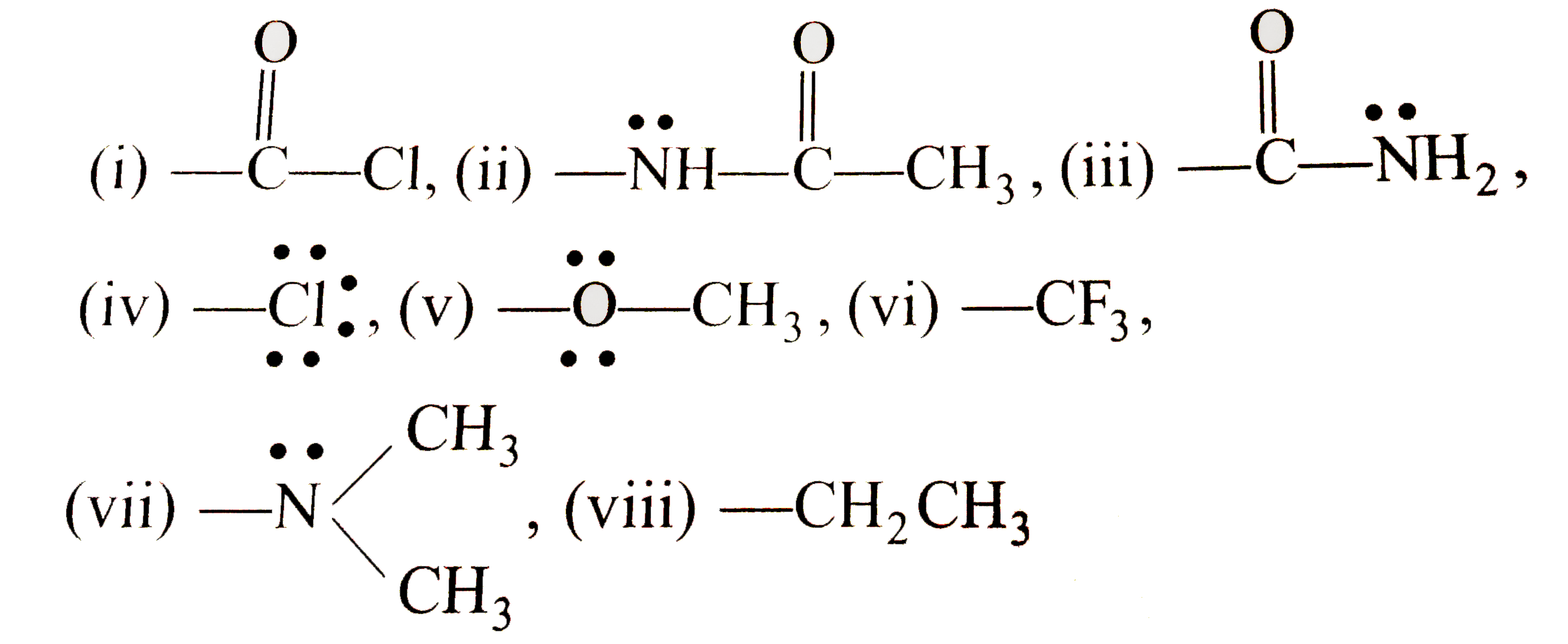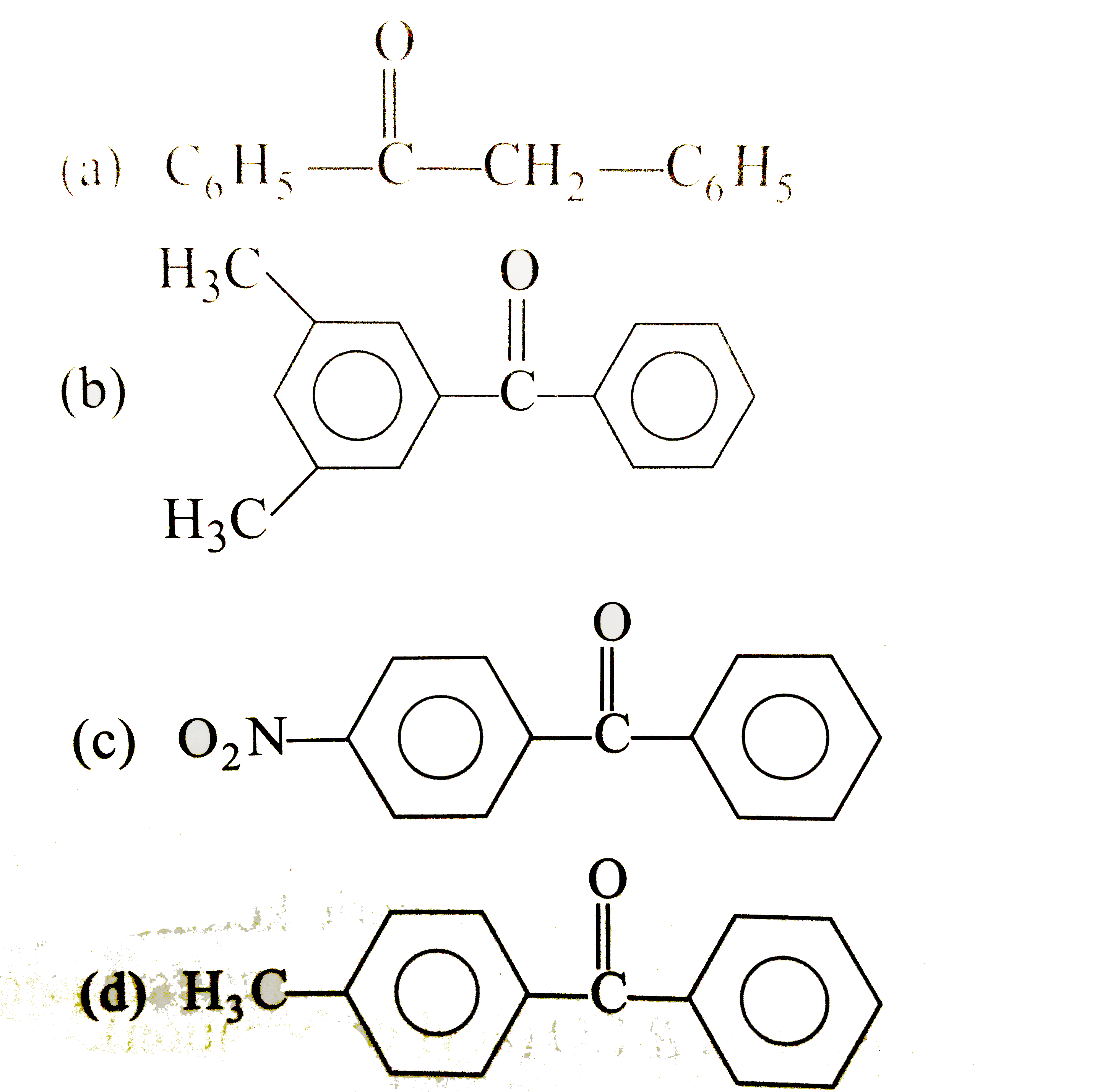Complete Solutions to EXAMPLES of chapter AROMATIC HYDROCARBONS (ARENES) of Class 11 book with complete answers and questions
| Class 11 | CHEMISTRY |
| Chapter | AROMATIC HYDROCARBONS (ARENES) |
| OP TANDON | EXAMPLES |
| Number Of Questions | 24 |
| Academic Year | 2023-24 |
Show wheter the following compounds exhibit aromaticity.
(a) Pyridine, (b) Cyclo-octateraene, ( c) Pyrrole, (d) Cyclobutaiene, ( e) Furan, (f) Thiophene.04:35View SolutionSuggest the name of a Lewis acid other than anhydrous aluminium chloride which can be used during ethylation of benzene.
01:28View SolutionWhich eylene gives (a) one, (b) two and ( c) three, monochloro derivaties ? Give their structures and names.
07:25View SolutionArrange the following compounds in order of decreasing reacivity towards EAS reactions.

 05:05View Solution
05:05View SolutionWhy do alkenes prefer to undergo electrophilec addition reaction while arenes prefer electrophilic substitution reactions ? Explain.
03:41View SolutionEthylbenzene is generally prepared by acetylation of benzene followed by reduction and not by the direct alkylation of benzene. Think of a possible reason.
05:23View SolutionExplain the following with proper reasoning :
(a) Although benzene is highly unsatureted, it does not undergo addition reactions.
(b) Benzene though unsaturated, undergoes substitutions reactions easily reather than addition.
( c) All m-directors are deactivating.
(d) The halogens, as exceptions, are o-p-directors but are deactivating.
( e) Most o- p-directing substituents are activating.View Solution(a) Show the formation of the electrophile in the following reactions :
(i) `CI_(2)+AICI_(3),` (ii) `HNO_(3)+H_(2)SO_(4),` (iii) `Br_(2)+Fe,` (iv) `H_(2)SO_(4),` (v) `H_(2)S_(2)O_(7),` Fuming sulphuric acid.
(b) How do substituent groups on an aromatic rign influence the course of electrophilic aromatic substituion ? Classify them by their effects.View SolutionGive the prencipal monosubstitution products from the following reactions and indicate whether each reaction is faster or slower than with benzene.
(a) Nitration of `PhNHCOCH_(3)`
(b) Bromination of `PhCBr_(3)`
( c) Chlorination of `PhC(CH_(3))_(3)`
(d) Nitration of `Ph-Ph`
( e) Nitration of `PhCOOCH_(3)`
(f) Sulphonation of `PhCH(CH_(3))_(2)`
(g) Nitration of `PhC-=N`
(h) Bromination of PhIView SolutionShow by an arrow the preferred product of reaction with `E^(+)` of each of the three isomeric, (a) nitrotoluenes, (b) methoxy toluenes and ( c) methoxy acetanilides. Explain your choices in each case.
View SolutionExplain the following percentages of meta electrophilic substitutions.
(a) `underset(4.4%)(C_(6)H_(5)CH_(3)),underset(15.5%)(C_(6)H_(5)CH_(2)CI),underset(33.8%)(C_(6)H_(5)CHCI_(2)),underset(64.6%)(C_(6)H_(5)C CI_(3))`
(b) `underset(100%)(C_(6)H_(5)N(CH_(3))_(3)),underset(88%)(C_(6)H_(5)CH_(2)N(CH_(3))_(3)),underset(19%)(C_(6)H_(5)CH_(2)overset(+)N(CH_(3))_(3))`View SolutionGive the monosubstituon product in the following reactions :
 View Solution
View SolutionThe Wurtz-Fitting reaction may be employed to unite aryl and redicals although it is impreactical for the union of unlike aliphatic radicals. Explain.
View SolutionPredict the product (s) and outling the mechanism for the process when benzene is treated with,
(i) `(CH_(3))_(3)C CI"in presence of "AICI_(3)`
(ii) `(CH_(3))_(2)ChArrCH_(2)"in presence of "H_(2)SO_(4)`
(iii) `(CH_(3))_(2)CHCH_(2)"in presence of "AICI_(3)`
(iv) `(CH_(3))_(3)COH"in presence of "H_(2)SO_(4)`.View SolutionSketch the following transformations :
(1) `underset("Propylbenzene")(C_(6)H_(5)CH_(2)CH_(2)CH_(3))tounderset(1-("p-Clorophenyl"))(p-CIC_(6)H_(4)CHhArrCHCH_(3))`
(ii) `underset("Cinnamic acid")(C_(6)H_(5)CHhArrCHCOOH)tounderset("Styrene")(C_(6)H_(5)CHhArrCH_(2))`
(iii) `C_(6)H_(6)toC_(6)H_(5)CHhArrCH_(2)`
(iv) `p-CH_(3)-C_(6)H_(6)COOHtoC_(6)H_(5)-CH_(3)`
(v) `C_(6)H_(5)CH=CHto"Sym"-C_(6)H_(3)(CH_(3))_(3)`
(vi) `C_(6)H_(5)CH_(5)toC_(6)H_(6)`
(vii) `CH_(3)-C=CHto"Sym"-C_(6)H_(3)(CH_(3))_(6)`
(viii) `C_(6)H_(6)to1,2,3-C_(6)H_(3)(CH_(3))_(3)`
(ix) `C_(6)H_(6)to(C_(6)H_(5))_(2)C(CH_(3))_(2)`
(x) `C_(6)H_(6)to(C_(6)H_(2))_(2)C(CH_(3))_(2)`View SolutionHow will you distinguish between : (i) Ethylbenzene and o-xylene ?
(ii) Ethylbenzene and styrene ?
(iii) Phenytl acetylene and styrene ?
(iv) Benzene and toluene ?View SolutionArrange the following in increasing order of dipole moment.
 View Solution
View SolutionWhat are (A), (B) and ( C) in the following scheme of reactions ?
 View Solution
View SolutionWhat are the oxidation products of the following
 View Solution
View SolutionClassify the following groups as ortho, para or meta directing when present on benzene nucleus.
(i) `-CH_(3)`,(ii)`-NH_(2)`, (iii) `-NO_(2),` (iv)`-COOH,` (v) `-OH,` (vi) `-SO_(3)H,`
(vii) `-X("halogen"),`
(viii) `OCH_(3),` (ix) `-CHO,` (x) `-CN`
(B) Classify the following goups as activating or deactivating with respect to further electrophilic substitution of the aromatic ring.
(i) `-NH_(2)` (ii) `-NO_(2)` (iii) `-SO_(3)H,` (iv) `-CH_(3)` (v) `-CI,` (vi)`-CN`.
( C) For each of the following substituents indicate whether in donate electron or withdraw electron.
 View Solution
View SolutionComplete the following equations :
(i) `2C_(^)H_(5)CI+Naoverset("Ether")to`
(ii) `C_(6)H_(6)+CI_(2)overset("FeCI"_(3))to`
(iii) `C_(6)H_(6)+H_(2)C=CH_(2)overset(AICI_(3),HCI)underset("370K,"Pressure")to`
(iv) `C_(6)H_(6)+CO+HCIoverset("air/"V_(2)O_(5))to`
(v) `C_(6)H_(6)+CO+HCIoverset(AICI_(3))to`
(vi) `3C_(6)H_(6)+CHCI_(3)overset(AICI_(3))to`
(vii) `C_(6)H_(6)+CH_(3)CH_(2)CH_(2)CIoverset(AICI_(3))to`
(viii) `C_(6)H_(6)+(CH_(3))_(3)C-CH_(2)Broverset(AICI_(3))to`
(xi) `C_(6)H_(6)+(CH_(3))_(2)CHCH_(2)OHoverset(H_(2)SO_(4))to`
(x) `C_(6)H_(6)+CH_(3)CH=CH_(2)overset(H_(3)PO_(4))underset("523K, Pressure")to`View SolutionName the final product of the following reactions : (i) Benzene is treated with methyl chloride in presence of anhydrous aluminium chloride.
(ii) Benzene is treated with acetyl chloride in the presence of anhydrous aluminium chloride.
(iii) Phenol is heated with zinc.
(iv) Sodium benzoate is heated with soda lime.
(v) Benzene is treated with fumining nitric acid in presence of conc. `H_(2)SO_(4)`.
(vi) Benzene is catalytically hydrogenated. (vii) Ozone reacts with benzene. (viii) Toluene is treated with a mixture of conc. `CNO_(3)` and conc. `H_(2)SO_(4)`.
(ix) Chlorine is passed through boiling toluene. (x) Toluene is heated with acidic potassium premanganate solution. (xi) Toluene in carbon tetrachloride is oxidised by chromyl chloride. (xii) Ortho-xylene is oxidised with hot acidic `K_(2)Cr_(2)O_(7)` solution.View SolutionHow will you prepare benzene from ? (i) Phenol, (ii) Benzoic acid, (iii) Acetylene, (iv) Benzene sulphonic acid, (v) Aniline, (vi) Nitrobenzene, (vii) Toluene, (viii) Chlorobenzene.
View SolutionWhat combination of acyl chloride or acid anhydride and arene are choosen to prepare the following compounds ?
 View Solution
View Solution
EXAMPLES questions and complete solutions for chapter AROMATIC HYDROCARBONS (ARENES) of G.R. BATHLA & SONS CHEMISTRY (HINGLISH) of Class 11
